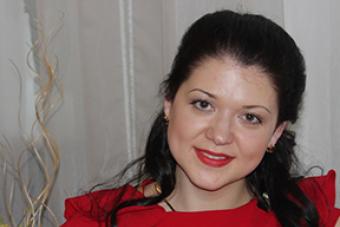Lessons for future first-graders. Guides for parents and teachers:
- Educational games for children senior group kindergarten
- Games for teaching literacy to senior preschoolers
Game “Find out who makes what sounds?”
Target
: a set of subject pictures (beetle, snake, saw, pump, wind, mosquito, dog, locomotive).
Description: The teacher shows a picture, the children name the object depicted on it. To the question “How does a saw ring, a beetle buzz, etc.” the child answers, and all children reproduce this sound.
Game "Whose voice?"
Target: develop auditory perception.
Description: The driver turns his back to the children, and they all read a poem in chorus, the last line of which is pronounced by one of the children at the direction of the teacher. If the driver guesses it, the specified child becomes the driver.
Sample material:
We'll play a little while you listen and find out.
Try to guess who called you, find out. (Name of the driver.)
A cuckoo flew into our garden and was singing.
And you, (driver’s name), don’t yawn, guess who’s crowing!
The rooster sat on the fence and crowed throughout the yard.
Listen, (driver’s name), don’t yawn, find out who our rooster is!
Ku-ka-riku!
Game "Guess the Sound"
Target: practice clarity of articulation.
Description: The presenter pronounces the sound to himself, clearly articulating. Children guess the sound by the movement of the presenter's lips and pronounce it out loud. The first one to guess becomes the leader.
Game “Who has good hearing?”
Target: develop phonemic awareness, the ability to hear sounds in words.
Game material and visual aids : a set of subject pictures.
Description: The teacher shows a picture and names it. Children clap their hands if they hear the sound they are studying in the name. At later stages, the teacher can silently show the picture, and the child pronounces the name of the picture to himself and reacts in the same way. The teacher marks those who correctly identified the sound and those who could not find it and complete the task.
Game “Who Lives in the House?”
Target: develop the ability to determine the presence of sound in a word.
Game material and visual aids: a house with windows and a pocket for putting pictures, a set of subject pictures.
Description: the teacher explains that only animals (birds, pets) live in the house, the names of which contain, for example, the sound [l]. We need to put these animals in a house. Children name all the animals depicted in the pictures and choose among them those whose names contain the sound [l] or [l’]. Each correctly chosen picture is scored with a game chip.
Sample material: hedgehog, wolf, bear, fox, hare, elk, elephant, rhinoceros, zebra, camel, lynx.
Game "Who is bigger?"
Target: develop the ability to hear the sound in a word and relate it to the letter.
Game material and visual aids: a set of letters already known to children, object pictures.
Description: Each child is given a card with one of the letters known to the children. The teacher shows the picture, the children name the depicted object. The chips are received by the one who hears the sound corresponding to his letter. The person who scores wins large quantity chips.
Game "Helicopter"
Target: develop the ability to select words starting with a given sound.
Game material and visual aids: two plywood disks superimposed on each other (the lower disk is fixed, letters are written on it; the upper disk rotates, a narrow sector, the width of a letter, is cut out of it); chips.
Description: Children take turns spinning the disc. The child must name the word starting with the letter where the slot sector stops. The one who completes the task correctly receives a chip. At the end of the game, the number of chips is counted and the winner is determined.
Game "Logo"
Target: develop the ability to isolate the first sound in a syllable and correlate it with a letter.
Game material and visual aids: a large lotto card, divided into four squares (three of them contain images of objects, one square is empty) and cover cards with learned letters for each child; for the presenter a set of separate small cards with images of the same objects.
Description: The presenter takes the top picture from the set and asks who has this item. The child, who has this picture on the lotto card, names the object and the first sound in the word, and then covers the picture with the card of the corresponding letter. The first one to cover all the pictures on the lotto card wins.
Sample material: stork, duck, donkey, tail, catfish. rose, lamp, etc.
Game "Chain"
Target: develop the ability to highlight the first and last sounds in a word.
Description: one of the children names a word, the person sitting next to him selects a new word, where the initial sound will be the last sound of the previous word. Continues next child row, etc. The task of the row is not to break the chain. The game can be played as a competition. The winner will be the row that “pulled” the chain the longest.
Game “Where is the sound hidden?”
Target: develop the ability to establish the place of sound in a word.
Game material and visual aids: the teacher has a set of subject pictures; Each child has a card divided into three squares and a colored chip (red with a vowel, blue with a consonant).
Description: The teacher shows a picture and names the object depicted on it. Children repeat the word and indicate the location of the sound being studied in the word, covering one of the three squares on the card with a chip, depending on where the sound is located: at the beginning, middle or end of the word. Those who correctly place the chip on the card win.
Game "Where is our home?"
Target: develop the ability to determine the number of sounds in a word.
Game material and visual aids: a set of subject pictures, three houses with pockets and a number on each (3, 4, or 5).
Description: Children are divided into two teams. The child takes a picture, names the object depicted on it, counts the number of sounds in the spoken word and inserts the picture into a pocket with a number corresponding to the number of sounds in the word. Representatives of each team come out in turn. If they make a mistake, they are corrected by the children of the other team. For each correct answer, a point is counted, and the row whose players score the most points is considered the winner. The same game can be played individually.
Sample material: com, ball, catfish, duck, fly, crane, doll, mouse, bag.
Game "Wonderful bag"
Target
Game material and visual aids: a bag made of colorful fabric with various objects, the names of which have two or three syllables.
Description: children come up to the table in order, take an object out of the bag, and name it. The word is repeated syllable by syllable. The child names the number of syllables in a word.
Game "Telegraph"
Target: develop the ability to divide words into syllables.
Description: The teacher says: “Guys, now we’re going to play telegraph. I will name the words, and you will transmit them one by one by telegraph to another city.” The teacher pronounces the first word syllable by syllable and accompanies each syllable with clapping. Then he names the word, and the called child independently pronounces it syllable by syllable, accompanied by clapping. If a child completes the task incorrectly, the telegraph breaks down: all the children begin to slowly clap their hands; a damaged telegraph can be repaired, that is, pronounce the word correctly syllable by syllable and clap.
Alphabet in pictures for children
Alphabet letter coloring pages for preschool and primary school age children.
Learning any language begins with becoming familiar with the alphabet. How to introduce a child to the alphabet? Of course, with the help of beautiful and educational pictures. With our ABC coloring book, getting to know the alphabet will become an enjoyable and memorable game for your children.
Each coloring page contains a drawing of a letter, its spelling, as well as pictures of animals and objects that begin with this letter.
While coloring pictures, children will name objects and pronounce letters constantly.
These educational letter coloring pages will be an excellent springboard for in-depth study of the Russian language in the future.
These didactic materials will be useful for educators, teachers, and parents for joint activities with kids.
Riddles are useful for learning the alphabet: Letters of the alphabet. You can solve these riddles to reinforce the letters of the alphabet.
Letters A, B, C, D, D, E, E, F
Letters Z, I, J, K, L, M, N, O
Letters P, R, S, T, U, F, X, C
Letters Ch, Sh, Shch, b, ы, b, e, yu, ya

Want to know the most effective way to teach your child letters and learn the alphabet in the shortest possible time? With our recommendations, it will not be difficult for you to teach your child the alphabet at 3-6 years old. In just a month of short lessons, you can learn vowels and consonants with your child and start reading.
www.fullhdoboi.ru
Why teach your child the alphabet?
Before introducing your child to the letters of the Russian alphabet, answer yourself the question WHY you want to do this right now. Is your child 5 or 6 years old and you want to prepare him for school? He is 2 years old and you want to brag about the successes of the little genius to your friends and relatives? Your baby is 3 years old and you want to “invest the maximum in him” in every way possible so as not to miss the optimal moment for all-round development? What?
Of course, you can teach a child the alphabet at any age. You can show cards with letters from the cradle, but... Let's put parental ambitions aside and focus on the object - the child. Why does he need to know the letters? Right to read! Are you sure that right now he is READY to learn the basics of reading? Read what conditions are necessary in order to teach a child to read in our articles and only after that make the right decision:
Any knowledge must be applied in practice. You must clearly understand that learning letters and the alphabet is followed by teaching a child to read. Otherwise there is no point, there are a lot of others effective ways develop memory, thinking, speech. To do this, it is not necessary to learn letters with a one and a half year old toddler who is not yet able to pronounce them correctly. If you start introducing the alphabet too early, there is a high chance that the child will simply forget the letters by the time he is ready to learn to read. Or the second, more “scary” moment. Having learned “be”, “ve”, “de”, a child will not be able to read, because when reading, other rules apply. To merge syllables and turn them into words, you need to pronounce sounds in a completely different way. Retraining is always more difficult. Be careful when choosing talking toys and books: they don't always pronounce the letters correctly!
 happymama.ru
happymama.ru
Knowledge of the alphabet in itself will not give a child anything. He will simply memorize it like a song or rhyme, but this will not teach him to read. Therefore, leave learning the alphabet for children 5-6 years old, who will need it at school, and with kids just learn the letters without adhering to the alphabetical sequence.
- The alphabet is not just all the letters, it is the letters in a CERTAIN sequence.
- The alphabet is the basis of any language.
- The alphabet is the key to all dictionaries, reference books, encyclopedias and other documents where order and systematization are important.
- Knowing the alphabet saves time.
Learning letters: where to start
In what order should I learn the letters? Do you need to learn the alphabet? Should I start with vowels or consonants?
Let's be clear, so:
1. There is no need to learn letters in alphabetical order.
2. Don’t learn letters mixed up: vowels and consonants.
3. Be the first to learn 10 letters representing vowel sounds with your child.
The most important thing at this age is to pay attention to CORRECT SPEECH. If necessary, contact a speech therapist to help you put in the correct sounds, because success in learning at school directly depends on this.
A common problem at this age is sound. R. You can work with your child yourself by regularly doing.
Kids learn everything through play. If you want your child to quickly memorize letters and learn to read, come up with fun educational toys. And it’s not at all necessary to buy expensive manuals and look for a tutor. You can do everything yourself. Learn the alphabet anytime, anywhere! Play with letters and your child will remember them in no time.
3ladies.su
What to do if a child does not want to learn letters? Can't remember the alphabet?
First rule: don't force it! Make learning feel like exciting game, and not for tedious cramming.
The more varied the activities, the faster the child will learn letters and learn to read. Be patient! Study regularly and do not overload your baby with information. 10 minutes a day and several lessons a week are enough for your child to confidently move towards his goal, and for you to rejoice at his successes and achievements.
Let's make letters
Children love to sculpt. Offer them dough, plasticine, clay, wet sand and anything that can somehow hold a given shape. Modeling develops fine motor skills, thinking, speech. The mind, as you know, is at your fingertips.
 alwaysbusyama.com
alwaysbusyama.com
You should not sculpt several letters at once. One is enough. Letters can be decorated with beads, beans, and peas. If you made it from salt dough, you can bake it and paint it with gouache.
In parallel with modeling, come up with other tasks to reinforce the recognition of the letter being studied.
Decided to bake cookies? Invite your child to make and then eat his own letter. You can bake several letters with different fillings, and then taste which one tastes better. For example, “A” - with apricot, “K” - with cinnamon, “I” - with apple jam, etc.
 alwaysbusyama.com
alwaysbusyama.com
Ready-made cookies in the shape of letters are available for sale. You can even form words from it.
 whatican.ru
whatican.ru
Building letters
 alwaysbusyama.com
alwaysbusyama.com
Many kids are ready to spend hours with a construction set. Take advantage of this hobby to learn the alphabet.
 adalin.mospsy.ru
adalin.mospsy.ru
Do you have a mosaic? Play with letters. You can not only lay out letters, but also turn them into each other by adding or removing elements.
 nasolini.livejournal.com
nasolini.livejournal.com
It is convenient to build letters from counting sticks.
 www.babyblog.ru
www.babyblog.ru
You can use cubes and other available materials.
 bukvar-online.ru
bukvar-online.ru
 otvetprost.com
otvetprost.com
Drawing letters
Focus on your baby's interests. Likes drawing? Great, offer to draw a letter, dress it up in a dress, or move your finger along a tray with semolina while you are busy preparing malashi porridge for dinner.
 alwaysbusyama.com
alwaysbusyama.com
You can simply draw letters in the air. One draws, the other guesses. The main thing to remember about mirror image: you need to stand at the mirror or next to the child (not opposite).

There is a lot of joy in drawing letters on foggy glass or on your own plate.

We are looking for a letter in magazines and newspapers
 bookmix.ru
bookmix.ru
Set a specific task: find and cut out the letter “A”, for example. A more complicated option is to cut out the letters and compose a message from them.
 alwaysbusyama.com
alwaysbusyama.com
Another proven game. Take a pen and color in all the “o” letters you find in the text. This is definitely a task for a real detective!
Playing hide and seek with letters
Hide and seek is a favorite children's game. Invite the kids to look not for each other, but for the letters.
 bukvar-online.ru
bukvar-online.ru
Encourage with exclamations of “hot”, “cold”, “warmer”. You can hide magnet letters, cubes with letters, cards - any option is suitable.
Sort the letters
Sign the rolls from toilet paper- these are your piggy banks. You need to throw the appropriate chestnuts into them. No chestnuts, take corks or something else that fits.
 babyzzz.ru
babyzzz.ru
"Manual" alphabet
Letters can be “tamed.” To do this, you need to learn them! The game will appeal to those who are not afraid to get dirty and love to draw.
 alwaysbusyama.com
alwaysbusyama.com
Entertaining didactic tasks
 cdn.imgbb.ru
cdn.imgbb.ru
You can find and print fun activities with letters. It's very easy to make your own cards.
 www.liveinternet.ru
www.liveinternet.ru
How to learn letters: video
When introducing letters to a preschooler, name them as they are pronounced in speech, and not as they are usually called in the alphabet.
Dear readers! Tell us how you teach letters to your child? What games do you play to help your child remember the alphabet faster and learn to read?





